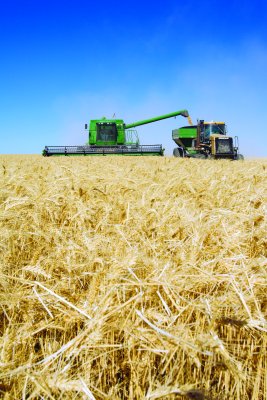Farm revenues may be soaring statewide, but not all farmers are raking it in this year.
EASTERN OREGON Farm revenues may be soaring statewide, but not all farmers are raking it in this year. Dry-land wheat farmers in arid Gilliam and Morrow counties are applying for federal assistance, saying an after-the-fact “extreme weather emergency” caused the harvest to come in thinner than expected. Gilliam County Judge Pat Shaw, who voted in favor of a resolution to pursue disaster relief Sept. 3, says extreme temperature swings and a lack of rainfall during the growing season decreased yield by 30%-50%. Farmers didn’t know the crop was damaged before harvest, thus the six-month lag between the disaster and the requested declaration.
“Most disasters are pretty apparent,” Shaw says. “This one was not.”
When it comes to non-irrigated wheat farming in dry counties, disaster declarations are not rare. “I can’t think of a year when there hasn’t been at least one county asking for a declaration,” says Oregon Department of Agriculture spokesman Bruce Pokarney.
A disaster declaration must go through the governor’s office and be approved by the federal government. It can help farmers obtain no-interest or low-interest loans to cover their losses.
Gilliam and Morrow counties saw their agricultural sales jump by 32% and 22% respectively in 2007, mostly on the strength of rising wheat prices. Some farmers planted more acreage in wheat to cash in on the prices, but the weather did not cooperate.
It has been a high-stakes harvest for many Oregon farmers, with fat crop prices balanced against painfully rising costs for fuel and fertilizer. But on balance things are looking up. New research from the U.S. Department of Agriculture’s Economic Research Service finds that profits in farming have never been bigger. The research pegged 2007 net farm income in Oregon at $1.48 billion, a 50% increase from the previous year. That figure is expected to shoot up even higher this year, due partly to the cultivation of 150,000 additional acres statewide for wheat.
BEN JACKLET
Have an opinion? E-mail [email protected]


